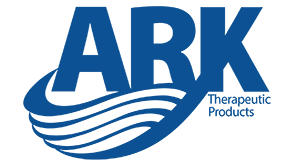Feeding Tips and Tricks for Cleft Babies and Preemies
25th Aug 2011
This wonderfully informative guest post comes from a dear family friend. We thank her for sharing her story and hope that others may benefit from her insightful advice.
.
My daughter Sarah was born with a very wide unilateral (one side) cleft lip and palate. Feeding became an immediate issue for us as she did not take to the typical bottle for cleft babies, the Haberman feeder. She was also immediately stricken with severe reflux. We spent five days in the hospital. By the second day, the nurses were insisting we begin feeding by tube, even though Sarah had begun to take a little milk with the one other main bottle available for cleft babies, the Mead Johnson Disposable Cleft Lip/Palate Nurser.
One nurse decided that she could help Sarah feed more easily and sat up with me all night to give Sarah frequent, small feedings. Sarah began to feed better, even though reflux continued to be a problem. Our plastic surgeon had the idea to cut one section from the cross cut of the Mead Johnson bottle to help the milk flow more easily. This was very important because while having the instinct to suck, the cleft left Sarah without any suction ability. This frustrated her and made feeding more difficult. With the notch cut from the bottle’s nipple, the milk flowed well, and we could keep up with her natural sucking rhythm. We left the hospital on the fifth day after she was born.
.

.
Once home, it became clear that along with reflux, one of the main problems for Sarah was that feedings were exhausting. This is typical of cleft babies and, as I was to learn, also for preemies. Having no or little suction, cleft babies have more to coordinate when feeding: their tongues, swallowing, the tendency for milk to come out of their nasal passages, etc. We were very careful to always feed Sarah in an upright position, holding her like a football. We also had to feed her frequently. This was important both because feeding was so tiring for her, and because we thought smaller feedings would help with the reflux. I always let her feed as much as she had energy to take, though. Once home, I experimented with lots of nipples, including preemie nipples. We always went back to the Mead Johnson. It was longer, and I think this made it easier for her as the milk went farther back in her mouth. Even though her reflux continued for several months, I learned that if she kept the milk down for just a little while, most of the nutrients were already digested. This made me worry less. Sarah gained weight slowly, but steadily. She always seemed to eat as much as she wanted. Forcing calories never worked, only more frequent feedings. Like with preemies, wanting to eat was not the problem; the issue was how tiring it was to eat. The trick was to make feeding easy and to have a feeding schedule where she fed for short periods of time, but more often than a baby without feeding issues.
Here is a list of tips and tricks I used to help Sarah feed more easily and to make sure she got the nutrition she needed:
.
• Frequent feedings
• Use bottle nipples that allow milk to flow easily, or cut a notch out to help
• Experiment with nipples to see which works best
• Keep a feeding schedule and/or diary to reassure yourself that the baby has the opportunity to feed enough
• Feed with the baby sitting upright – this can help not only with keeping milk from flowing back and causing ear infections, but also with preventing gastro issues
• One nutritionist recommended decreasing the water added to formula to make it thicker. However, I think this is a bad idea that can lead to constipation. We did this a couple of times with that result, and it was horrible. There are plenty of other ways to add calories safely.
• When starting solids, start with the regular baby cereals, but you can also add things like Karo syrup, melted butter, etc. to give a little calorie boost
• Mix broth or gravy in rice for extra calories - think about packing calories, not food
• Don’t worry about what types of food you serve for the different meals; Sarah often had baby food green beans for breakfast, along with an egg
• I gave Sarah teaspoonfuls of olive oil to give her a calorie boost; she liked the taste
• Use foods with lots of fat and protein for calories and nutrition: avocados, eggs, good oils; you can search the internet for a good list
• Try using a blender to make your own baby food, if possible (I mostly bought jars because it never occurred to me to make my own in a blender). Using a blender can allow you to control the texture of the food and also add ingredients to boost calories
• Well cooked oatmeal with brown sugar and butter was a favorite early food – easy to eat, nutritious, and good calories
• To make drinking from a cup easy for Sarah, we took the insides out of sippy cups; this meant that the drink would flow out if it was dropped, but drinking wasn’t any work for her
• Use small spoons; the metal ones with rubber handles worked really well
• Prevent gastro problems, such as constipation, with good fibers (fruits, vegetables, grains) and enough water; we had to try many different foods to see which worked best as Sarah had problems associated with taking in so much air when she fed
• Use liquid vitamins to reassure yourself the baby is getting the nutrients he/she needs
• Use whole milk as they get older for extra calories
• Make feeding FUN; we used cute little plates or bowls with dividers, colorful spoons Sarah picked out, lots of finger foods
• Use condiments with food; dipping sauces like ketchup, salad dressings, etc. are fun and add calories
• French fries are fun to eat and pack calories
• When the child is older, cut up food into little chewable pieces they can handle
• It’s fun to make a face or a silly animal out of the food on the plate; this can encourage them to eat
• When the child is too old for blender foods, a food processor can help easily cut up pieces that are still too big
• Have the baby watch you eat, too
• Use protein powders for a protein boost
• Use lots of mini-meals and snack meals
• Straws are great; you can get them in lots of fun shapes or with little spoons on the bottom and use them for milkshakes, protein shakes, etc.
.
I hope some of these ideas help. My main point of advice here is to pack calories, not food. Like preemies, cleft babies tire easily. They have to work hard at feeding, and so feeding needs to be easier for them. All the rest is hopefully just regular baby stuff. I had to learn and remember that the cleft was just a little part of Sarah, a small part of that whole little person. I had to learn and remember to follow my instincts. I also had to learn to have fun and enjoy every thing about being Sarah’s mom. Since speech was a concern, I tried to help by talking to her, a lot, about everything. I jabbered on about her clothes and colors and what I was making for supper. I read to her constantly or drew pictures and wrote the words beneath them. Everything about us early on was food and/or mouth related! This really did help her speech, I am sure. We were cautious about baby talk, but regular speech in a sing-song or clear, light voice was a constant. Also, having Sarah watch me doing things like preparing food helped her get excited about eating. We tried to make things easy, fun, and relaxing in a situation that was often not. Again, just follow your instincts and enjoy your baby. Use the internet, other parents, or health professionals to get the information and help you need, but trust yourself.
.

